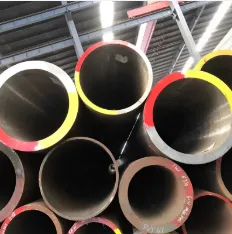

Consideration of mechanical tubing, such as 440 and 420 stainless steel variants, allows one to appreciate their niche yet vital roles. These contain higher carbon content, enhancing hardness and wear resistance ideal for mechanical applications requiring vigorous machining and polishing. While not famous for corrosion resistance, their mechanical properties serve industries like automotive manufacturing and cutlery. Furthermore, welded and seamless tubing varieties cater to distinct industry requirements. Welded stainless steel tubing, crafted by welding a strip of steel, meets precise dimensions economically and finds widespread use in structural applications. Conversely, seamless stainless steel tubing, manufactured through extrusion processes, offers superior pressure resistance. Its uniformity and aesthetic appeal make it indispensable in high-pressure applications within the petrochemical industry. The journey through various types of stainless steel tubing highlights the necessity of aligning material characteristics with specific application needs. Industry experts must weigh factors such as corrosion resistance, mechanical strength, and environmental exposure during selection. Moreover, collaborating with reputable suppliers ensures access to certified materials, safeguarding quality and regulatory compliance. In addition to material selection, fabrication expertise significantly impacts the performance of stainless steel tubing. Professionals with a deep understanding of welding, bending, and cutting techniques play a pivotal role in delivering accurate, custom solutions tailored to unique projects. The evolution of stainless steel tubing technology continues with advancements in precision manufacturing and alloy formulation. As industries demand more sustainable and robust solutions, the future of stainless steel tubing looks promising. Industry leaders, engineers, and designers remain committed to innovation, ensuring stainless steel tubing evolves to meet the multifaceted challenges of tomorrow. By sharing authentic experiences, backed by expertise and validated through real-world applications, this comprehensive overview empowers stakeholders to make informed decisions. Ultimately, trust in selecting the appropriate stainless steel tubing type propels industries toward operational excellence and longevity.
Post time: ফেব্রু. . 08, 2025 00:33
Prev:

















